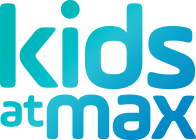
As any child behavioural psychologist will confirm, sometimes children need a little extra motivation to change their behaviour, practise new skills or complete a set task. Behaviour charts are useful here. They are an effective, short-term strategy that can be used for a few weeks then phased out as you prefer. Here are some guidelines for using a behaviour chart:
1. Make it clear what behaviour (or behaviours) you are working to change
Trying to change all behaviours at once will be overwhelming for a child. Therefore, identify just one or a few behaviours that your child is working on (sharing with their sibling, staying in bed all night, getting ready for school without an argument) and use the sticker chart solely for those behaviours. The child receives a sticker every time that they engage in the chosen behavior and save up for their reward.
2. Identify the prize ahead of time
It is important to identify what reward your child is working to achieve. It is not necessary to choose an elaborate prize, but it is suggested that you put some thought into choosing a reward that your child will genuinely not want to miss out on.
You could even let your child choose the prize—this will increase their motivation to work for their reward even further.
3. Explain how the reward can be earnt
Motivation decreases when we have no idea how long we have to work on something before we will be rewarded. For children, this is just the same, if not a little more accentuated.
Often, stickers are used on reward charts, with a new sticker added every time a child displays good behaviour or achieves something you have outlined that they need to do (playing nicely with their siblings at home, behaving well at school that day, learning a new word etc.). If you decide to use stickers to motivate your child, make sure your child knows how many stickers they need to collect before they can earn a prize.
4. Make the prizes achievable
If the steps required to earn a reward are too great or challenging, your child is likely to lose interest or start believing that it is out of their grasp. Design your reward chart so that prizes can be earnt within a few days to a week. This will make the stickers more meaningful and the whole activity more enjoyable for your child. For this reason, it can be sensible to choose smaller prizes.
6. Keep your child’s eye on the prize
Simply reminding your child of the rewards up for grabs can make a big difference to their behaviour and all-round enthusiasm for working towards goals. A handy tip is to keep the reward chart on a shelf where they can see it or use a visual picture next to the reward chart to draw their eye back towards it.
7. Be consistent
Consistency is key with a sticker chart. You must ensure that you give your child a sticker every time they engage in the target behaviour. It can also be useful to determine a specific time when you will be free to go through your child’s progress each day, depending on the behaviour you are targeting (e.g. remembering to do their homework after school). You may also find that you need to keep a closer eye on what your child is up to at any moment so that you can catch them behaving well and reward them right away.
8. Connect the sticker to the targeted behaviour
By reviewing what behaviour earned your child the sticker, you are making a positive connection between the reward and the behavior that your child is likely to recall later (e.g. “You are getting this sticker because you did X behavior” or “Nice job! I’m really proud of you for doing X behaviour! Just three more stickers until you earn your prize”).
This type of positive reinforcement makes it easy for your child to understand what the target behaviour is and increases the likelihood of them repeating the same behaviour again.
9. Be positive
The idea behind a sticker chart is to reward your child, not discipline them. So if your child is behaving poorly, there is no need to take away any of the stickers or rewards they have earned previously.
When your child’s behaviour has changed or a new routine has been formed, and you are ready to phase out the reward chart, it’s a good idea to keep noticing and praising your child for the behaviour. For example, you might gradually phase out a reward chart after a few weeks by increasing the length of time between stickers or points. If your child is getting a sticker each day for unstacking the dishwasher, you could make it a sticker every two days, with praise and hugs as well.
If you would like more information about how to support the development of your child’s behaviour or to book an appointment with one of our child behavioural psychologists at our Melbourne assessment and therapy clinic, please contact Kids At Max on (03) 9702 4447.
Written by Kids At Max Psychologist
